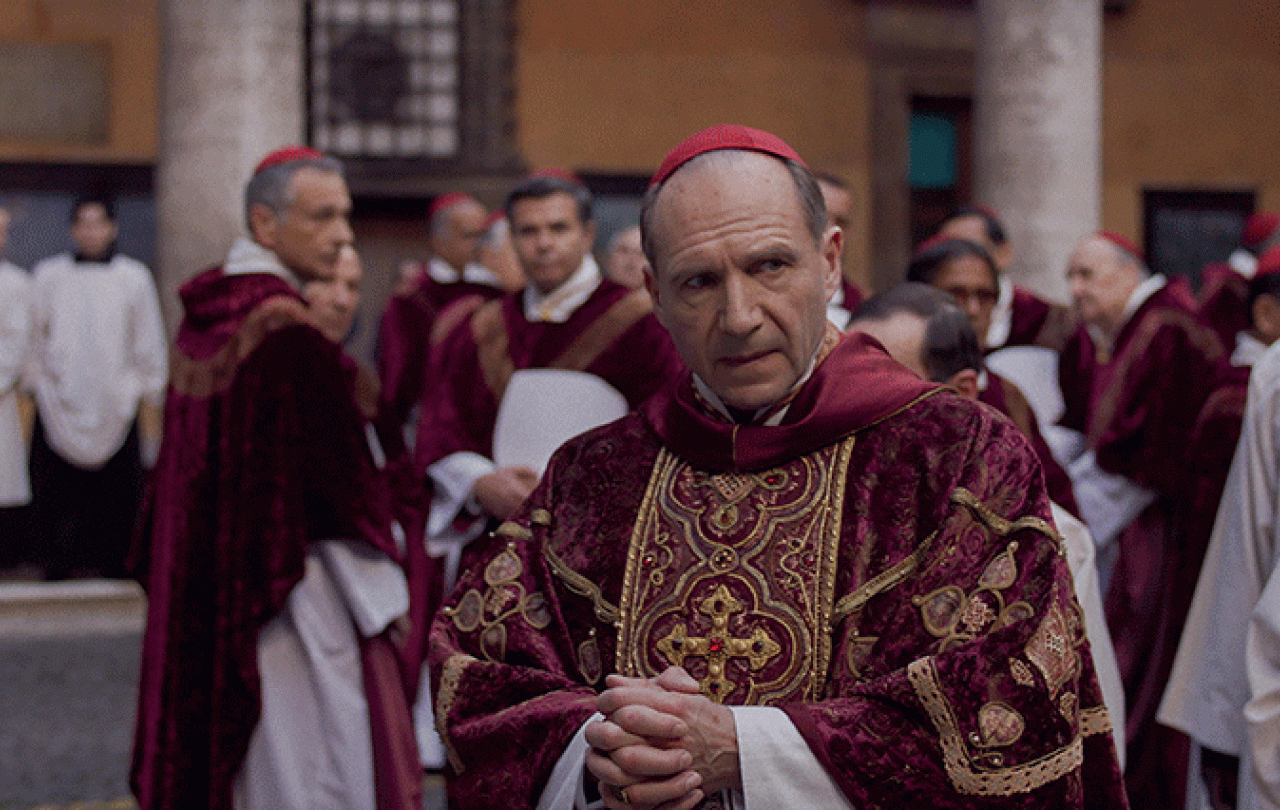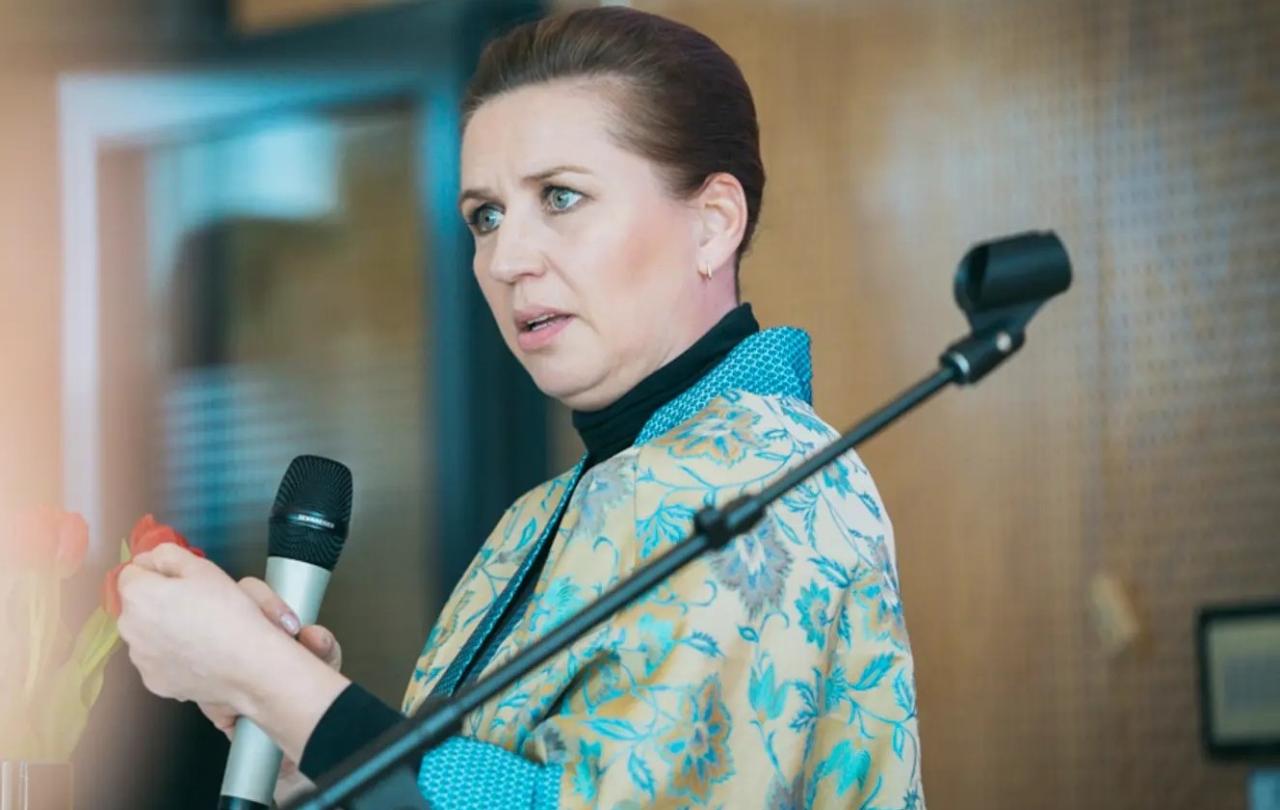
An ecclesiastical election, conducted behind closed doors, by a group of old men hardly seems a subject for a riveting thriller. Yet, back in 2016, Berkshire-based novelist Robert Harris thought otherwise. Conclave became an international best-seller.
Now it’s been turned into a movie. And, according to the cognoscenti, a rather good one at that. British Vogue lauded it with great enthusiasm:
“It’s a treat in every sense – visually, sonically, dramaturgically – and, as we hurtle into this bleakest of winters, exactly the kind of galvanising, pulse-racing shot in the arm we all need.”
Really?
Well, following its UK premiere at the London Film Festival in October, the BBC were quick to report a potential flurry of Oscar nominations and even that it was ‘thought to be a strong contender for the best picture award’.
So, what’s going on? How has this dangerously dull and turgid subject turned into a narrative that tames the critics and converts the sceptics?
A late night showing on the day of its release at the end of November beckoned me to find out. So off I went with my wife, after she had finished Gospel Choir practice.
Directed by award winning film-maker Edward Berger (All Quiet on the Western Front), it stars Ralph Fiennes, Stanley Tucci, John Lithgow and Isabella Rossellini.
The premise is simple. The Pope is dead, and the Cardinals of the Catholic Church convene from around the world to choose his successor. But this, of course, is only the beginning.
Sequestered in the Vatican the prelates are cut off from outside influence as the secret process of electing a new pontiff is enacted. But this does not stop events, past and present, from impacting and shaping their deliberations.
Overseen by Cardinal Thomas Lawrence (Fiennes), the British Dean of the College of Cardinals, the story unfolds as he negotiates these successive revelations and happenings. Along the way he is also wrestling in his own faith for spiritual reality and personal integrity.
As they gather, the not-so-friendly fraternal rivalry of the cardinals and the manoeuvring of the leading contenders sets up a presenting series of tensions for the Conclave:
- Cardinal Bellini (Tucci) is the Vatican’s theologically progressive, yet diffident, Secretary of State
- Cardinal Tremblay (Lithgow) is a slippery and ambitious, self-promoting Canadian conservative
- Cardinal Tedesco (Sergio Castellitto) is the forthright and reactionary traditionalist Patriarch of Venice
- Cardinal Adeyemi (Lucian Msamati) is a theologically conservative and populist Nigerian who offers the possibility of making history as the first Black pope.
Then, at the last minute, into the mix enters a cardinal that no one knew of. Cardinal Benitez (Carlos Diehz) is a Mexican who arrives claiming the late pope appointed him Archbishop of Kabul in pectore (in secret) prior to his death.
Shuttling between their living quarters in the Domus Sanctae Marthae and the Sistine Chapel, the venue for their voting process, the story unfolds. A complex interplay of ecclesiastical politics, theology and spirituality intermingle with issues of identity, character and choice to make for a heady mix. At stake, or is that on offer, is the power of the Papacy.
Reflecting the church at large the Conclave is a community of conservatives and liberals, traditionalists and progressives, populists and academics, activists and administrators.
Like the world at large, all human life is here. Men with hidden secrets, driven by ignoble motives that often dress themselves in more noble apparel. Ambition, greed, ego and privilege rub shoulders with graciousness, sincerity and self-sacrificial service. Sometimes even in the same person. The human condition is a complicated one. It seems that power retains its age-old allure and ability to corrupt.
And maybe that’s it. For all the secrecy and mystery that surrounds a papal election, right down to the colour of the smoke, it is a human concoction. Human fingerprints are all over it, just like they are all over the church.
The church aspires to be better. To be shaped by a higher ideal. To properly be ‘the body of Christ’ and represent the imago dei in the world. To so inhabit the love and grace of God that through its life and witness God might touch and transform the world for the better. Yet, as one of the Italian cardinals correctly, if too easily, argues, “We are mortal men; we serve an ideal. We cannot always be ideal.”
Indeed, the great apostle St. Paul had to confess, “Not that I have already obtained all this, or have already been made perfect …”, but he is committed to go further, “… [yet] I press on to take hold of that for which Christ Jesus took hold of me.” There is an ideal to pursue.
As the cardinals progress through successive rounds of voting the field of candidates narrows and the required two-thirds majority comes within reach. Yet the prospects of the main characters rise and fall through the twists and turns of the plot as it heads to its inevitable climax.
Then one final, unexpected and flabbergasting reveal hits the audience from out of left field. It is a masterful denouement to the tale.
Speaking about how it all came together Harris revealed:
“I approached this not as a Catholic and not as an expert in the Church. So my preparation began by reading the gospels, which are revolutionary. And the contrast between that and this great edifice of ritual and pomp and power and wealth of the Church is striking … There's also this question of can you freeze anything at a point nearly 2000 years ago? Haven't the world and humanity evolved?”
As we drove home at gone midnight I found it hard to disagree with Vogue.
The visual spectacle created by cinematographer Stéphane Fontaine plays wonderfully with the renaissance setting of the Vatican. It is a beautiful and luscious feast for the eyes.
Volker Bertelmann’s teasing creativity with the score made the drama come alive and heightened what has been an unforgettable experience.
But for me, most of all, it was the drama. The story that was told. The unfolding of events and the interplay with people and their motives, their relationships and their vested interests. It is layered and nuanced and complex, just like real life.
It has left me pondering once again the chemistry between heaven and earth. Between our freewill and agency as individuals and the mystery of the divine presence and the fruit of prayer.
As the cardinals prepare for the final vote a waft of air blows gently through a broken window in the Sistine Chapel and rustles their voting papers. Is Berger tipping his hat to the presence of the Spirit of God, present and active in human affairs?
Perhaps the last word should go to Robert Harris.
“With temporal power, or indeed spiritual power, it is very difficult to avoid factions, scheming, the lesser of two evils—all the compromises that go into running any huge organization and trying to keep, not just hundreds, but thousands of people onside … I have a lot of time for politicians, just as I have a lot of time for these cardinals, because they are grappling with almost insoluble problems. But someone has to do it. Someone has to run a society. And I've tried to write about them with a degree of sympathy.”
Support Seen & Unseen
Seen & Unseen is free for everyone and is made possible through the generosity of our amazing community of supporters.
If you’re enjoying Seen & Unseen, would you consider making a gift towards our work?





